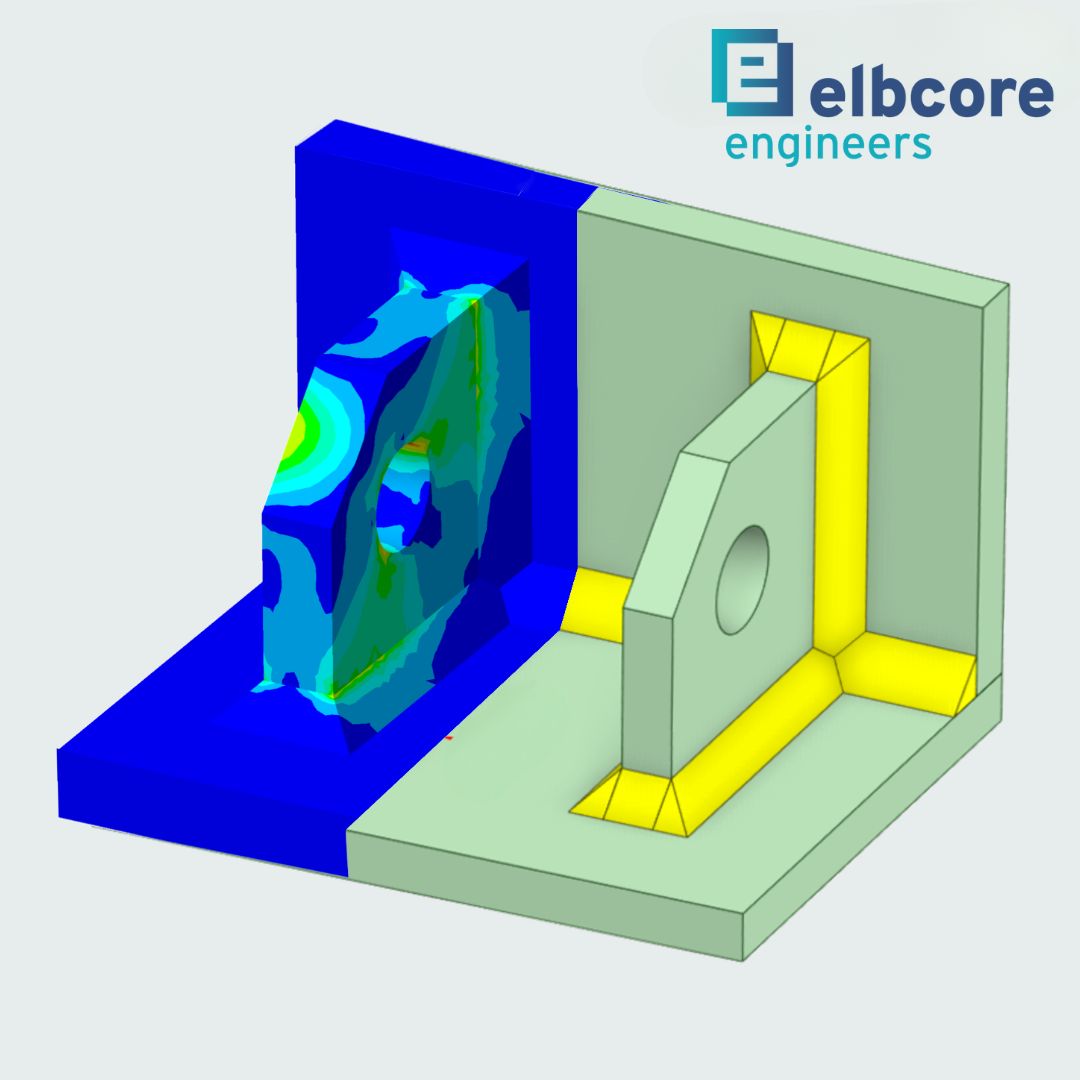For many engineers and designers today, the FKM guideline is an indispensable tool for calculating the strength of machine components. Chapters 3 and 4 in particular offer a structured methodology for carrying out the static strength verification and the fatigue strength verification – two decisive tests for component safety. In this article, we highlight the central steps of the application, specific advantages over other standards and relevant practical aspects for FEA-based simulations. A variety of materials can be used for verification with the FKM guideline, including typical steels, aluminum materials and also various cast materials. In principle, a distinction is made between welded and non-welded areas.
The static strength verification and the plastic support number
Chapter 3 of the FKM guideline focuses on the assessment of component safety under static load. The central idea here is to evaluate the permissible stress, taking into account possible plastic reserves. The plastic support number npl plays a central role here. It describes the ability of a structure to bear further loads beyond the elastic limit by utilizing plastic deformations. Other influences such as increased temperature are taken into account within the directive by increasing the overall safety factor.
The practical application in FEA simulations requires careful modeling: the choice of suitable material laws, especially elastic-plastic models, is crucial. The permissible stresses for the verification, as defined in Table 3.6 of the guideline, must be adjusted taking npl into account. This differentiated approach enables a more economical design of components without compromising safety – a significant advantage over standards that use purely elastic verification concepts.
Proof of fatigue strength and permissible number of cycles
Chapter 4 of the guideline is dedicated to the assessment of fatigue or creep strength under oscillating or alternating loads. Compared to the static strength verification, the determination of the permissible stress amplitude is significantly more extensive and takes into account many more parameters, such as the surface roughness or a thickness factor of the welded sheets. Depending on the number of cycles required of the component, proof is provided either for fatigue strength or creep strength.
In practical applications, the careful modeling of notches and geometry transitions in FEA models is particularly important. Too coarse a grid resolution or neglecting local voltage peaks can lead to considerable deviations. Our experience shows that local mesh refinement and the targeted use of submodeling techniques help to precisely capture these effects in the simulation.
Differentiation from other standards and validation status
In contrast to more general standards such as Eurocode 3 or specific DIN standards, the FKM guideline offers a material and load-specific methodology that provides consistent assessment approaches for both static and dynamic loads. Especially in the area of the transition from elastic to plastic behavior and in the case of multiaxial stress, the FKM guideline enables a more detailed and practical evaluation. As Wagner et al. “The FKM guideline has proven to be a practical tool for the industry, but requires careful application, especially in the transition from elastic to plastic behavior and with multi-axial loading.”(Wagner et al., 2015).
Our experience in the simulation of complex components – for example, machine components under cyclical stress or flow components with temperature influences – shows that the FKM methodology offers clear advantages over overly conservative or overly generic evaluation methods due to its flexibility and validation basis.
Application practice: Specific FEA instructions
In the practical calculation process, we start with an elastic linear FEA analysis to identify the relevant stress states. Subsequently, if necessary, the support figures are determined and the verification is carried out in accordance with the FKM specifications. Especially with dynamic and cyclic loads, we place particular emphasis on the exact modeling of component edges, notches and weld seams in order to correctly map the influences on fatigue strength.
An example from our practice: For a company in the fan industry, we carried out a fatigue strength verification for the rotor blade mount. Through targeted FEA modelling and the use of various optimization measures, we were not only able to successfully demonstrate fatigue strength, but also significantly streamline the structural design – a clear advantage in terms of material costs and service life prediction.
Conclusion: FKM-compliant simulation as a competitive advantage
With its clearly defined methods for static and dynamic strength verification, the FKM guideline offers a practical framework that shows its strengths particularly in virtual product development. The targeted application of this methodology in conjunction with high-precision FEA simulations enables safe, optimized and at the same time economical designs.
If you want to develop your products at the highest technical level or optimize your existing components to withstand loads, we are happy to support you with our expertise incomputational strength assessment according to FKM and state-of-the-art FEA simulation. Contact us – together we will find the optimum solution for your requirements.
List of sources
- Wagner, L., et al. (2015). FKM Guideline: Strengths, Limitations and Experimental Validation. Procedia Engineering, Volume 133, 418-425.
